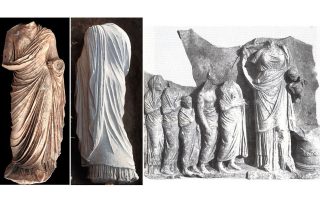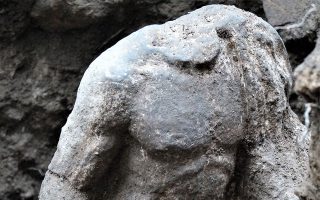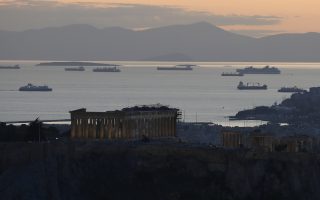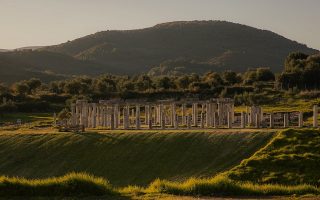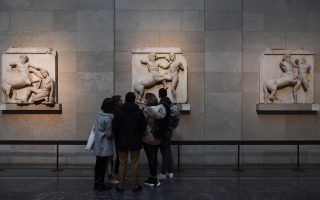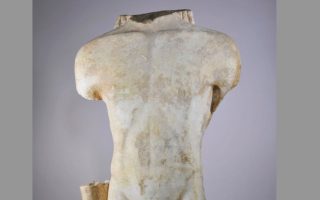Excavations at the Minoan palace of Zominthos near completion
After nearly 40 years of excavations in the foothills of Mount Ida on Crete, archaeologist Efi Sapouna-Sakellaraki reflects on the unique Bronze Age site
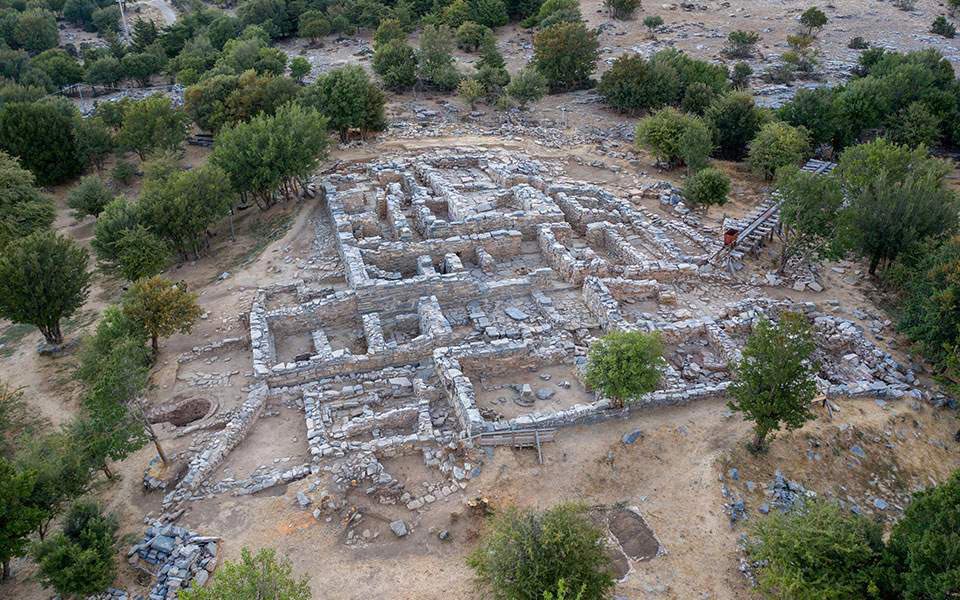
“I’ve never participated a more difficult excavation,” remarked site director Efi Sapouna-Sakellaraki in a recent interview with Kathimerini’s “K” magazine.
Despite the adverse conditions and ongoing restrictions related to the Covid-19 pandemic, the veteran archaeologist completed yet another season at the Bronze Age site over the summer, unearthing more secrets from “the first and only Minoan palace on a mountain.”
With little more fieldwork to do, excavations at the famous site on Crete are now drawing to a close after nearly 40 years.
First discovered in 1982, excavations at Zominthos started in 1983 under the directorship of Yannis Sakellarakis, who led the research up to his death in 2010. His wife and longtime co-worker Efi took over the project, applying a range of modern techniques, including laser scanning and 3D capturing methodologies in the survey and recording of the site.
Zominthos has been described as a unique Minoan palace center, located at an altitude of 1200 meters near Ideon Andron Cave, the mythical birthplace of Zeus, nestled into the side of Mount Ida (Psiloritis). The area was already home to a large building complex in the Protopalatial (Old Palace Period), from c. 1900 BC, and had access to plentiful supplies of freshwater.
In the subsequent Neopalatial (New Palace Period), from c. 1700 BC, a monumental building of 1600 square meters was built over the northwest wing of the old palace, one of the largest Minoan buildings ever found. Some of the remaining walls of this well-preserved multi-story building are three meters in height.
It has been speculated that Zominthos was not occupied all year round, instead serving as a seasonal residence for a central ruling authority when flocks of sheep were taken to higher ground, thus cooler, for grazing in the summer.
Dr Efi Sapouna-Sakellaraki and her team have worked on the large building complex around the main courtyard, covering an area of 1800 square meters. Over the course of their excavations, 71 rooms have been unearthed on the ground floor alone, including pottery workshops, storerooms and frescoed halls.
Last summer’s excavations focused on a section of the courtyard paved with irregular slabs, following the slope of the hill. It appears that the elaborate Neopalatial-era palace was built after an earthquake destroyed the earlier site.
The central courtyard would have played an important role in priestly rituals and religious ceremonies, and is similar in layout and design to the courtyards found at the contemporary sites of Knossos, Archanes and Phaistos.
The excavations also confirmed the older palace complex was much larger than its successor, covering an area of 3000 square meters, in addition to a cemetery.
A significant number of portable artifacts were found under the courtyard, including conical-shaped cups of various types (so-called “egg cups’), flint tools, bowls, and pieces of processed rock crystal.
Sapouna-Sakellaraki concludes the site was an important and prosperous religious center that served as a mountainside sanctuary near the peak of Mount Ida. The inhabitants amassed wealth from the natural resources of the surrounding countryside (Psiloritis), inlcuding herbs and aromatic plants.
The site was abandoned again after a big earthquake around 1600 BC, but appears to have been re-occupied after the Bronze Age and again during Roman times.
This article first appeared in Greece-Is.com, an English-language publishing initiative by Kathimerini.
